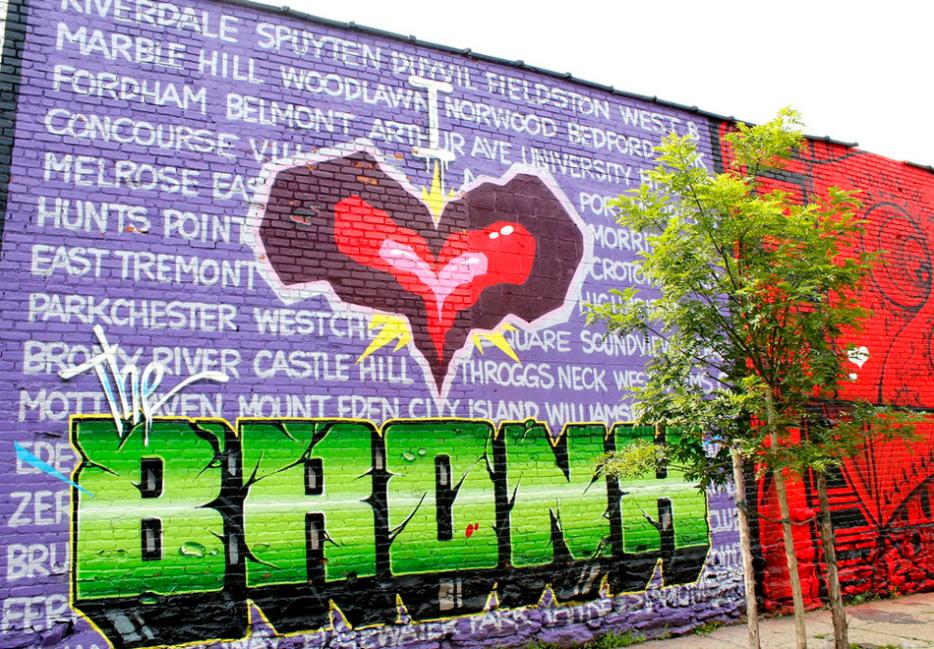If you’ve ever wanted to see a “real New York City ‘GHETTO’”—you know, the kind from Spike Lee movies and all your favourite rap albums—consider booking your trip with a registered tour group.
In an article on Sunday, the New York Post reported that a company called Real Bronx Tours was offering visitors the chance to experience the colourful flavours of an impoverished New York outer borough. According to the Post, on one recent tour a guide brought tourists to St. Mary’s Park, where she warned them about pickpockets and rhapsodized about the violence of the seventies. She mocked the Grand Concourse, modeled on a Parisian boulevard, playfully asking a couple from Paris, “Do you feel like we’re on the Champs-Elysées?” She pointed out a group waiting for people waiting for food at a church pantry: “As she spoke, a line of two dozen poor people—including one man visibly agitated by the onlookers—waited for handouts from the church pantry.”
Residents were, unsurprisingly, a little unhappy. Apparently the locals didn’t appreciate being ogled by tourists eager to catch a glimpse of ghetto life “from a safe distance.” The tour group responded to criticism, first by changing their website, removing the reference to “ghetto” tourism in favour of “a taste of the real Boogie Down Bronx” (which, with its bizarre, racially coded jive talk, is almost more offensive), and finally by cancelling the tours altogether.
In any case, Real Bronx Tours wasn’t breaking any new ground here. They’re simply the latest outfit in a long tradition of gawking at the NYC urban poor. In 1884, the New York Times published an article about the “latest fashionable idiosyncrasy” to hit town: “the visiting of the slums of the great city by parties of ladies and gentlemen for sightseeing.”
“Slumming” was a London phenomenon that took off overseas, with the upper class making forays into the tenements to see how the other half lived. Wealthy white New Yorkers explored poor black neighbourhoods, trekked through Chinatown, with its promise of opium dens and exotic beauties, or visited the Lower East Side, home of “Hebrews.” In 1895, the son of a Senator asked a local police chief to accompany him on a slumming expedition to Chinatown. (This is a nice compendium of the slumming craze.)
Slumming was voyeuristic, yes, but it was also seen as edifying. What better way to learn about modern life, real life, than by visiting the poor of your city? Gawking at The Other—new immigrants, new races, people experiencing brand new ways of urban living—was supposed to be about progressive self-awareness. “It is safe to assume that ‘slumming’ will become a form of fashionable dissipation this Winter among our belles,” the New York Times wrote.
The practice continued into the 1930s, when it slowly petered out. These days we usually get our voyeuristic thrills and well-intentioned sociology lessons through technology—quoting The Wire like it’s a documentary on inner-city public policy, flipping through gorgeous slideshows of Detroit “ruin porn,” checking in on whatever it is the Honey Boo Boos and Teen Moms happen to be up to on that afternoon’s TLC marathon.
For real-life slumming, we go overseas. Trips to Brazilian favelas, Slumdog Millionaire-inspired Mumbai slum tours, South African township trips—all are popular consciousness-raising tourist options designed to give the well-intentioned liberal traveler a gritty taste of real life. It makes sense. The high-minded traveler wants more than just a sunny beach and a cheap souvenir. Why visit a boring Mexican resort when you could visit a crazy giant Mexican garbage dump? We want to have our eyes opened. We want to be moved—shocked, touched, made to feel a little guilty about our privilege, and then safely deposited back home. What happens once we leave is largely beside the point. The thrill of the poverty safari is that it’s temporary.
In 2013, then, a tour of the Bronx makes a certain amount of sense. Post-industrial revolution, those urban neighbourhoods were a sight: a genuinely new thing to behold. As the 1884 Times article explained, the slumming ladies and gentlemen wanted to “see people of whom they had heard, but of whom they were as ignorant as if they were inhabitants of a strange country.” So perhaps a slumming craze is set for a comeback. With the chasm between the rich and poor ever widening—the distance between a downtown condo and an inner-suburb housing complex so vast they might as well be on different planets—it’s easy to see how the Real Bronx Tour business model could take off.
--
Find Hazlitt on Facebook / Follow us on Twitter
Image: AquaLungBX via Flickr






